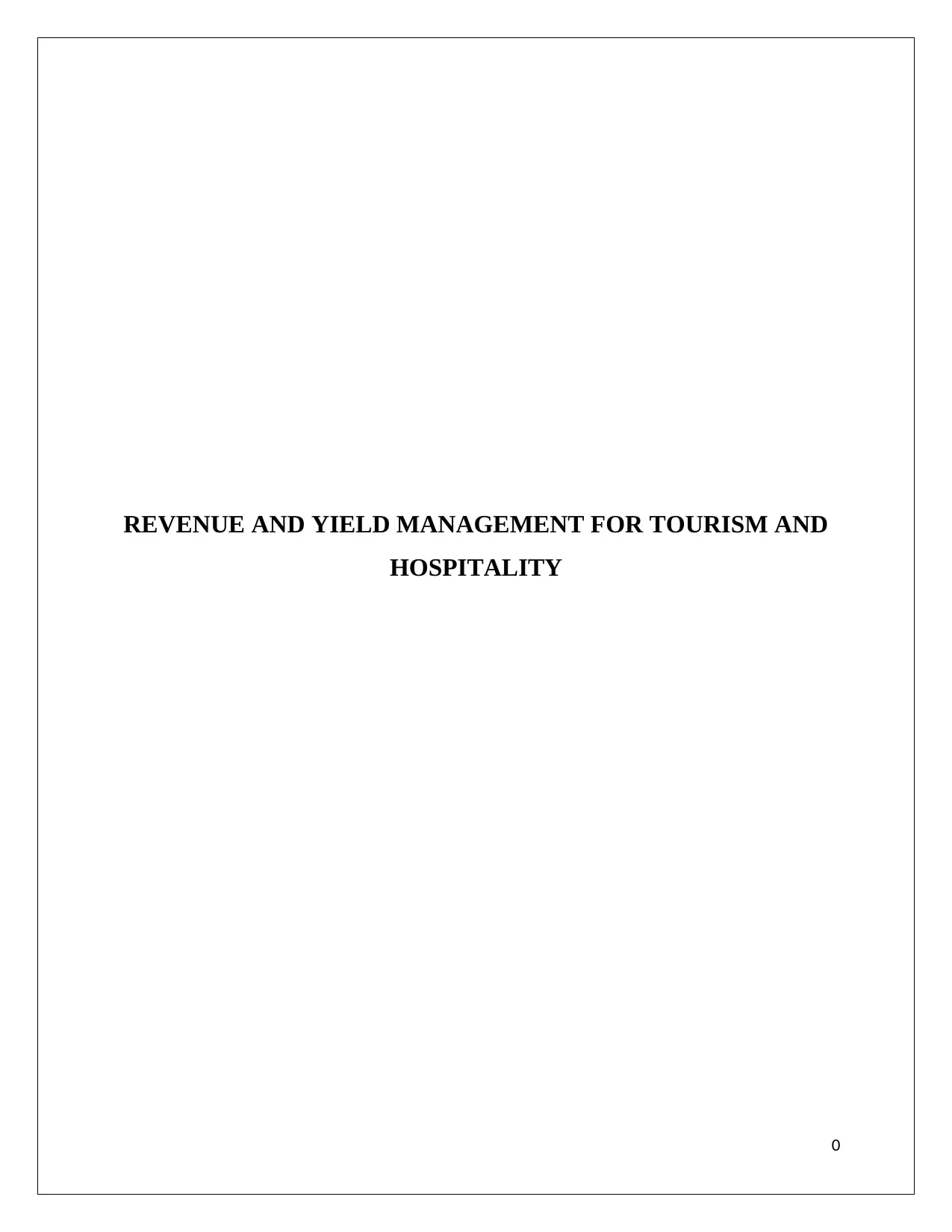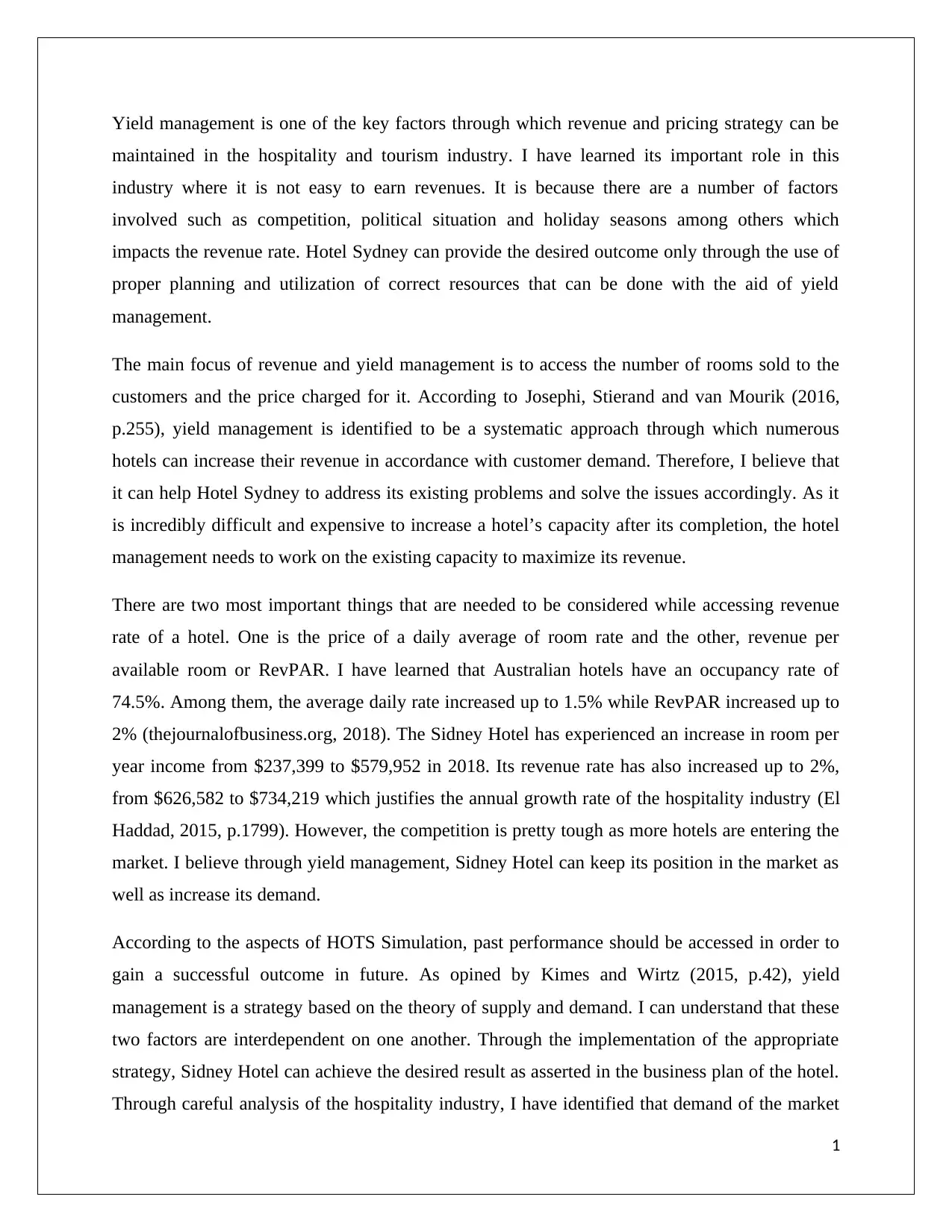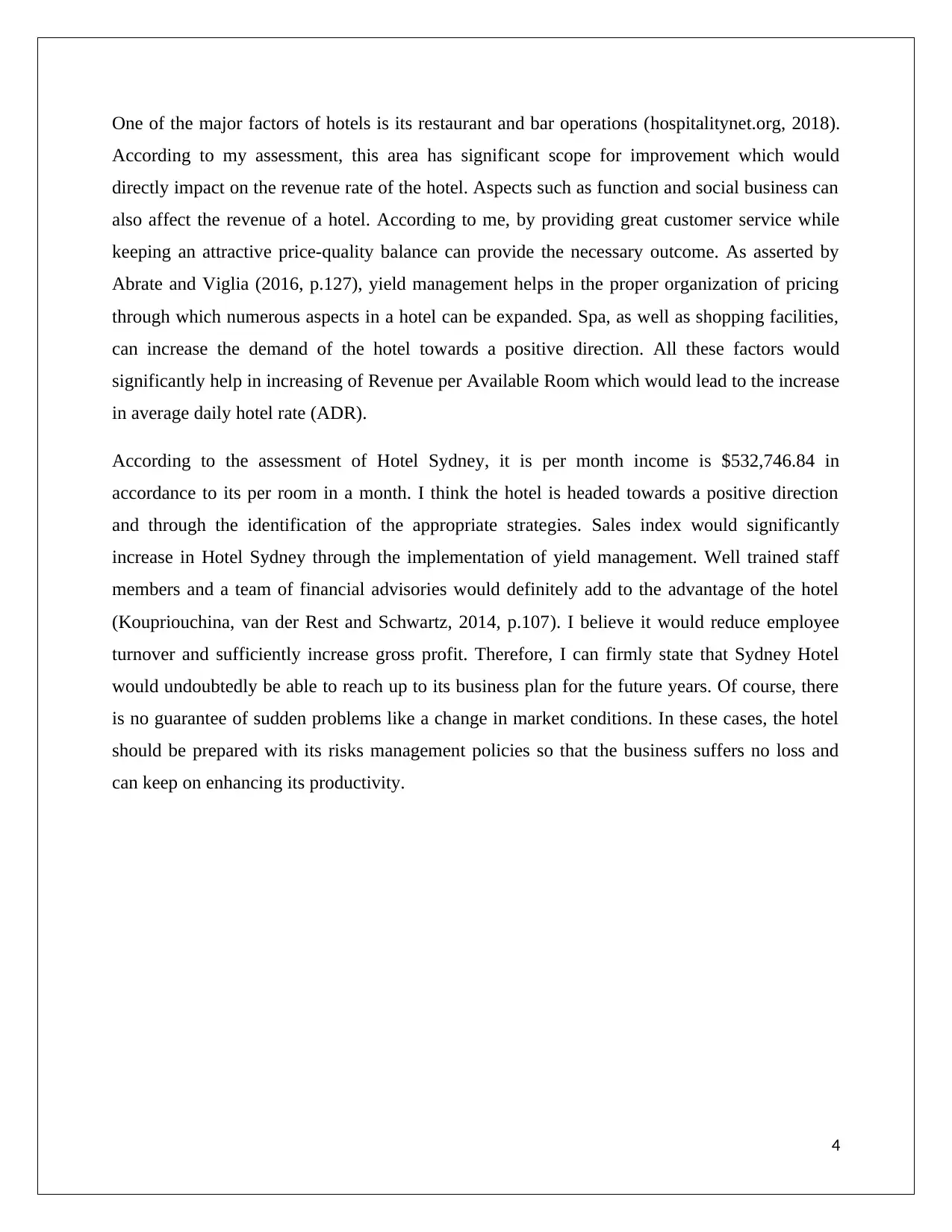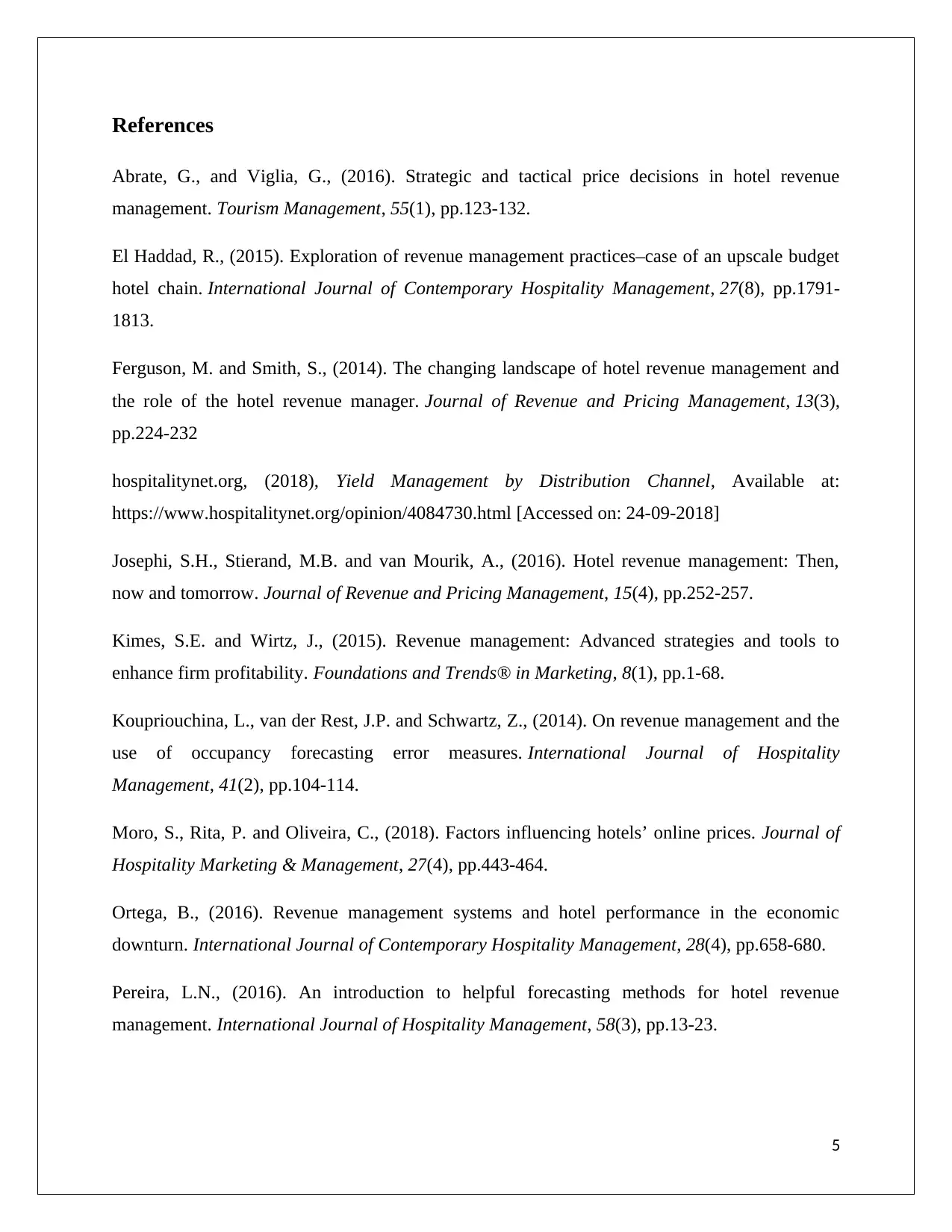This article discusses the importance of yield management in the hospitality and tourism industry and how it can help increase revenue. It analyzes Hotel Sydney's revenue rate and how yield management can help it maintain its position in the market. The article also covers the impact of market segmentation, the use of yield management in pricing strategies, and the role of customer relationship management in improving customer service. Additionally, it discusses the importance of restaurant and bar operations, function and social business, and spa and shopping facilities in increasing revenue. Finally, the article emphasizes the need for careful assessment and monitoring of financial areas and risks management policies to ensure the hotel's productivity.
![[object Object]](/_next/static/media/star-bottom.7253800d.svg)
![[object Object]](/_next/static/media/star-bottom.7253800d.svg)






